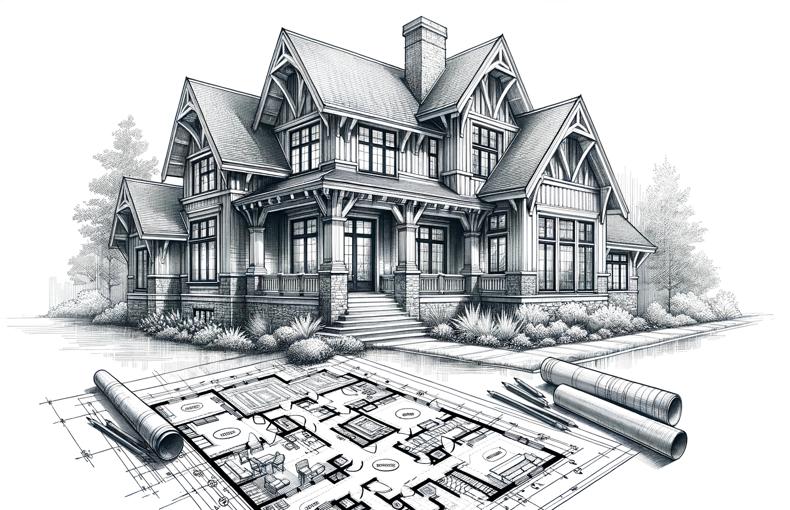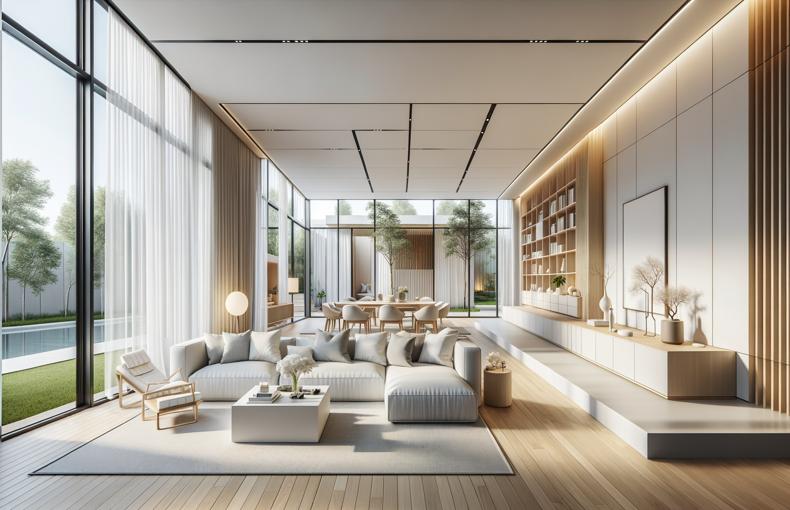Building Your Dream Home: Essential Considerations for Custom Home Drafting
Building your dream home is an exciting journey, filled with endless possibilities and opportunities to create a space that reflects your unique style and needs. However, before you can break ground, there's a crucial step that lays the foundation for the entire project: custom home drafting. This stage is where your vision begins to take shape on paper, ensuring that every detail is planned and executed to perfection. In this post, we'll explore the essential considerations for custom home drafting, helping you navigate this critical phase with confidence.
1. Understanding Your Needs and Lifestyle
Before diving into the drafting process, it's essential to have a clear understanding of your needs and lifestyle. Consider how you and your family live daily. Do you need a home office, a playroom for the kids, or a spacious kitchen for entertaining guests? Are you planning for future growth or aging in place? Having a comprehensive list of your needs and wants will guide the drafting process, ensuring that the final design aligns with your lifestyle.
2. Choosing the Right Lot
The location of your home plays a significant role in the drafting process. The size, shape, and topography of your lot will influence the design and layout of your home. It's important to consider factors such as sunlight, views, privacy, and proximity to amenities when selecting a lot. Your draftsperson will also need to consider the local zoning laws, building codes, and any restrictions that may affect the design.
External Resource: Understanding Zoning Laws
3. Establishing a Realistic Budget
Budgeting is one of the most critical aspects of custom home drafting. Establishing a realistic budget early in the process will help you make informed decisions about the size, materials, and features of your home. Your budget should also account for unforeseen expenses and changes during the construction process. Working closely with your draftsperson and builder to create a detailed budget can prevent costly surprises down the road.
External Resource: How to Budget for Building a House
4. Prioritizing Energy Efficiency
Energy efficiency is becoming increasingly important in modern home design. Incorporating energy-efficient features into your home can reduce utility costs, improve comfort, and increase the value of your property. Consider features such as proper insulation, energy-efficient windows, and sustainable building materials. Your draftsperson can help integrate these elements into the design to create a home that's both eco-friendly and cost-effective.
5. Maximizing Space and Functionality
Efficient use of space is a key consideration in custom home drafting. The goal is to create a layout that maximizes functionality without sacrificing comfort or aesthetics. This might involve open floor plans, multi-purpose rooms, or clever storage solutions. Think about how you use each space in your current home and what changes could improve functionality in your new home.
6. Incorporating Future-Proofing Elements
When drafting your custom home, it's wise to think about the future. This includes planning for potential expansions, integrating smart home technology, and considering accessibility features. Future-proofing your home can save you time and money in the long run, ensuring that your home remains functional and adaptable as your needs evolve.
7. Working with Professionals
The success of your custom home project heavily depends on the professionals you choose to work with. Your draftsperson, architect, and builder should have experience in custom home design and a clear understanding of your vision. Collaborating closely with these professionals will ensure that your home is designed and built to your specifications. Regular communication and transparency are key to avoiding misunderstandings and ensuring a smooth process.
8. Paying Attention to Details
The small details can make a big difference in the overall design and functionality of your home. From the placement of electrical outlets to the selection of finishes, every detail should be carefully considered and planned. A thorough drafting process will include detailed drawings and specifications that outline every aspect of your home. Taking the time to review these details with your draftsperson will help ensure that nothing is overlooked.
9. Considering Environmental Impact
As awareness of environmental issues grows, many homeowners are looking for ways to reduce the environmental impact of their homes. This might involve using sustainable materials, incorporating renewable energy sources, or designing the home to minimize waste. Your draftsperson can help you identify opportunities to make your home more environmentally friendly without compromising on design or comfort.
External Resource: Eco-Friendly Home Building Ideas
10. Reviewing and Revising Plans
The drafting process is iterative, meaning that your plans will likely go through several revisions before they're finalized. It's important to review each version of the plans carefully and provide feedback to your draftsperson. This collaborative approach ensures that the final design truly reflects your vision and meets your needs.
Conclusion
Building your dream home is a complex process, but with careful planning and the right team of professionals, you can create a space that perfectly suits your needs and lifestyle. By considering these essential factors during the drafting process, you'll set the stage for a successful project that results in a home you'll love for years to come.
Are you ready to start drafting your dream home? Contact us today to discuss your ideas and get started on your journey to the perfect custom home.
Need more information? Check out our blog for more tips on home design and building, or get in touch with our team of experts for personalized advice.











